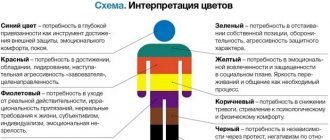Social character is a set of traits characteristic of a group of people united by nationality, gender, religion, professional and other characteristics. Social character is a designation of a stable system of personality orientation. It is the opposite of individual character, which distinguishes people from each other. The formation of social character is most influenced by the society surrounding a person, the economic and political situation.
The process of socialization begins from the moment a person defines himself and his relationship to other people, building one or another model of relationships, which leads to the establishment of a certain social character.
Concept
A person cannot exist outside of society .
This is its main difference from animals.
A social personality is any individual who belongs to social groups, enters into social relations, and is an independent member of society with certain rights and responsibilities.
Each person has many social personalities, since his life in society, as a rule, is quite multifaceted . The same person can be perceived differently from a social point of view by different people in his environment.
For example, the social personality seen by colleagues may have nothing in common with the personality familiar to friends or relatives.
The socio-psychological side of any personality includes a complex of specific individual parameters. Each personality is a separate person, with an inherent set of social and psychological traits.
The formation of a socio-psychological portrait of an individual is influenced by many factors: anatomical features, mental properties, immediate environment, social groups, education, sphere of professional activity, ideology, religion, etc.
Each person is initially a “blank slate” , which, in the process of socialization, under the influence of the above factors, begins to form into a specific personality with its own individual set of psychological and social traits.
Neanderthals
The second name for this branch of human evolution is paleoanthropes (Homo neanderthalensis). According to scientists, Neanderthal man appeared on earth about 200 thousand years ago. Its last representatives died out about 30 thousand years ago. The main activity of this species was hunting. It also served as the main means of subsistence. Possessing already quite good weapons, the Neanderthals could bring so much food in one hunt that it was enough for the entire tribe for several weeks. And thanks to his powerful physique and height of about 170 cm, tracking down prey and killing it was not so difficult.
Rice. 5. Neanderthal skeleton The brain volume of Neanderthals was 1000-1700 cm3. This type was of two types:
- European
- West Asian
The face of Neanderthals protruded very much forward, as did the back of the head. The powerful jaw hung down, and the sloping forehead gave these people a more menacing appearance.
Important! They no longer lived in caves, but in their own shelters, which were built using branches and animal skins. Neanderthals knew how to easily make a fire. Thanks to all these skills, they easily adapted to any natural conditions.
Types
In modern science, it is customary to distinguish the following social personality types from the point of view of value orientations inherent in individuals:
- Traditionalists . For them, law-abidingness, diligence, discipline and responsibility come first. Similar traits are observed against the background of a lack of desire for self-realization and independence.
- Idealists . They are the exact opposite of traditionalists. They strive to prove themselves and act in accordance with their own attitudes and principles. They do not recognize authorities and traditional views on issues.
- Frustrated type . These people do not feel involved in public life or in making important public decisions. They are characterized by low self-esteem, a constant state of depression and passivity.
- Realists .
Such individuals competently combine the desire for self-realization with an awareness of a sense of duty. They are able to rationally approach problems and objectively assess the proposed circumstances. - Hedonistic materialists. They are typical consumers who strive for immediate pleasures without thinking about the future. Their own desires always come first for them.
Personality types:
Acquisitive orientation
People belonging to this type believe that they cannot learn anything new from the outside world, so they say that they need to take care and save what they have. They are behind a kind of protective wall, they try to bring as much as possible into their shelter and give away as little as possible from it.
In the sphere of love, their partners are completely under control, and play the role of things that belong only to people of an acquisitive orientation. The same applies to the sphere of things. Such people are distinguished by greed, extreme economy and extreme accuracy. A money-grubber has thoughts, memories, and feelings in constant order; he cannot stand it if things are out of place, and will automatically put them in order;
Socio-psychological portrait
Each person has a bright individuality, consisting of natural, social, and psychological characteristics.
A socio-psychological portrait of any individual can be drawn up based on an analysis of the following components:
- temperament;
- character;
- skills and abilities;
- level of intelligence;
- emotionality;
- strong-willed qualities;
- communication skills;
- level of self-esteem;
- degree of self-control.
In the process of socialization of a person in society, these components constantly change and develop. This occurs as a result of assimilating social experience , obtaining new ideas about the surrounding reality, acquiring knowledge, mastering behavioral patterns, etc.
For this reason, the socio-psychological portrait of a person is formed throughout his life.
Properties and qualities
Socio-psychological properties are stable, individual traits of a particular individual that allow him to be characterized from a social and psychological point of view.
These properties are divided into four groups:
- properties associated with the development and use of social abilities (intellectual level, imagination, networking, etc.);
- properties formed under the influence of the group and as a result of intragroup interaction (knowledge, skills, behavior patterns, etc.);
- properties associated with social behavior, the position of the individual (activity, responsibility, sense of duty, desire to cooperate, etc.);
- properties based on the psychological characteristics of the individual (openness of thinking, mental agility, model of response to critical situations, etc.).
Socio-psychological qualities are personality characteristics that are formed in the process of interaction with other people, during communication.
Depending on his qualities, a person can perform certain social roles and occupy a specific social position. The standard classification provides for the division of people into three types in accordance with their inherent qualities:
- Athletics . People with an active lifestyle who always strive to dominate and manage.
- Picnics . People with well-developed adaptive mechanisms that allow them to easily enter into communications and successfully avoid conflict situations.
- Asthenics . Classic introverts who prefer solitude.
Spiritual (eschatological) level
Supporters at this level consider man to be an eternally living being, they are sure that after earthly life nothing ends, they connect human life with the spiritual world.
At this level, a person’s relationship with God can be resolved, there is a feeling of connection with God and the idea of happiness as service and connection with him.
Each personality type has all four levels. At some points, one of the levels defeats the other levels, based on a certain situation.
If you notice an error in the text, please highlight it and press Ctrl+Enter
Along with individual traits and qualities of character, one can distinguish a general way of adapting an individual to the social environment - the social type of human character
. When determining the type of character, we highlight what is essential and similar in the characters of individual people, which determines the general style of their life.
On this basis, we distinguish the following types of characters.
Harmonically integral type
It is distinguished by the stability of relationships and at the same time high adaptability to the environment. A person with this type of character has no internal conflicts; his desires coincide with what he does. He is a sociable, strong-willed, principled person. People with a harmoniously integral character retain their own value system in all difficult circumstances of life. This is a type of strong-willed fighter for his ideals and principles. Not opportunism, but changing reality in accordance with their ideals - this is the way these people adapt.
The type is internally conflicting, but externally harmoniously consistent with the environment
characterized by inconsistency between internal motivations and external behavior, which, in accordance with the requirements of the environment, is carried out with great tension.
A person with this type of character is prone to impulsive actions, but they are constantly restrained by volitional efforts. The system of his relationships is stable, but his communicative properties are not sufficiently developed.
People of this type have a complex system of correlating their value orientation with the conditions of reality. These people overcome discord with the outside world through internal tactical adjustments, psychological defense, devaluing current events that do not fit into their value system, preserving the basic values of the individual, but not actively trying to change external circumstances. This is a type of wise contemplator detached from everyday struggle.
Conflict type with reduced adaptation
characterized by conflict between emotional impulses and social responsibilities, impulsiveness, the predominance of negative emotions, underdeveloped communicative properties, and insufficient structure of self-awareness. Individual connections with the world among people of this type are not included in any general behavioral system. The life of such people follows a simplified scheme: their changing needs should, in their own opinion, be immediately satisfied without much effort.
The psyche of such individuals is not burdened with much experience; they are not concerned about the future. They are not seasoned in the struggle for existence. In childhood, they, as a rule, were subjected to overprotection and were surrounded by excessive care of the people around them. They are characterized by immaturity and inability to overcome life's difficulties. The main mechanism of their life is to obtain pleasure (hedonism). People of this type perceive all difficult situations as acute conflict and resort to unconscious psychological pseudo-defense - a distorted reflection of reality (whims, stubbornness, retreat into the world of dreams and fruitless dreams).
Variable type
indicates external adaptation to the environment as a result of instability of positions, unprincipledness, a low level of personal development, and the absence of a stable general way of behavior.
Lack of character and constant opportunism are a surrogate for plasticity of behavior; it should not be confused with genuine plasticity of behavior, with the ability to take into account circumstances to achieve basic goals, without deviating from social norms and requirements. People of this type are characterized by a simplified inner world; their struggle for existence is straightforward. They have no doubts about achieving utilitarian goals and do not have any special internal restrictions. They know only one type of obstacle - external. Reality puzzles them only with questions of a “technical” nature - how to achieve, how to achieve the greatest possible number of immediate benefits. This is the type of “realists”: they try to satisfy their needs as fully as possible within the limits of realistically existing possibilities. Adaptation, adjusting, adjusting the inner world to external circumstances - this is the general way of adaptation of these people.
Typological characterology can also be based on the leading orientation of the individual
. Thus, the famous German philosopher and psychologist E. Spranger (1882-1963) distinguishes the following personality types according to their leading orientation.
Science man
In its pure form, he knows only one passion - passion for a problem, a question, which leads to explanation, establishment of connections, theorizing. His experiences are divorced from real life: he can despair from the impossibility of knowing, or rejoice because of a purely theoretical discovery. He exhausts himself as a psychological being in order to generate a purely ideal world of regular connections. For him, only the purity of methods of cognition is valuable - truth at any cost. The world for him is an endless production of entities and a system of relationships of dependence. In its most natural and pure form, this form of life is embodied in professional scientists, who, as a rule, come to formulate their life tasks as a result of free interest. But the preliminary stages of this kind of spiritual organization are found regardless of professional affiliation, and, perhaps, the structural features of the type appear much more clearly on them than in great scientists, who are often very complex natures.
Economic man
This is not necessarily a person associated with production. The most important thing is that the main motive that determines various spheres of personality and the nature of its existence is the motive of utility.
In general terms, an economic man is one who puts utility first in all life relations. For him, everything becomes a means of maintaining life, the struggle for existence and the best arrangement of his life. He saves material, effort, time - just to get the maximum benefit from it. It would be more accurate to call him a practical person, since the entire field of technology is connected with the concept of economics. The meaning of his actions is not in the activity itself, but in its beneficial effect.
Aesthetic man
Purely aesthetic behavior is not characterized by lust. Direct contact with the world is always painful and associated with the struggle for existence. But there is a second world where pain is as sweet as joy, suffering is as spiritual as joy: this is the world of fantasy. We know that there are people who surround themselves with such fantasies, through which they perceive reality.
When considering the aesthetic type, we mean not so much artists who create material works, but people who create themselves, possessing the internal structure of the aesthetic type.
Social person
A special life form, which is called social, arises when this need for self-denial for the sake of another becomes a leading life need.
Social orientation in its highest manifestation is love. It can be a fundamental feeling for all of life. But it can also be directed at a separate object or a circle of objects and at the same time not lose the character of a leading need that determines all individual existence. The individual becomes the object of love as the center of values. You can love another person because the value of truth, or beauty, or holiness is discovered in him. Akin to such love is a passionate desire to acquire the values of life that are already known to us. But the essence of love itself is even deeper: it remains something in itself, turned to another life for the sake of the values contained in this life. Conceptually defining what ultimately defies formulation, we can say that love discovers in another person - one, several or many - potential bearers of certain values and finds the meaning of its own life in devotion to these people.
Political man
A special case when power in itself becomes the main thing for a person.
Here we have the totality of the worldview: self-affirmation, achievement of success, vitality, energy of being.
A political person strives for a high social status and only then, as a leader, in the rays of glory does he feel in his place.
Religious man
This is one whose spiritual structure is constantly and entirely aimed at achieving the highest meaning of life, postulated by religion.
The behavior of religious people is dominated by an altruistic orientation. They see the highest meaning of their existence in noble, free service to people - in helping the injured, wounded, maimed, infirm, humiliated and lonely. The behavior of such people significantly exceeds the norm of social responsibility.
Religious dogmas are firmly embedded in the sphere of superconsciousness of a religious person and are covered by a complex intuitive mechanism - the mechanism of faith. The behavior of a religious person is modified - ideas of goodness and love for man begin to dominate in his psyche. It is characterized by a desire for sinlessness, and its possible guilty behavior is reorganized through deep repentance and atonement for guilt through good deeds.
All the main religious confessions of the world affirm spirituality, morality, the highest ideals of human existence, mobilize a person to walk the earthly path with dignity, and postulate unshakable laws of human life among people.
Peculiarities
From a socio-psychological point of view, the personality has the following characteristic features:
- is not only an object, but also a subject of social relations, since it has freedom of choice;
- is unique because it has an individual set of social and psychological characteristics;
- formed under the influence of society (socialization process);
- understands his attitude to various events, phenomena, social attitudes;
- understands his needs, desires and goals;
- strives for self-realization;
- independently forms an opinion about members of society with whom he enters into various communications;
- fully involved in relations with the surrounding reality;
- engages in specific activities that allow one to satisfy material needs and occupy a certain place in society.
Analysis Options
The socio-psychological parameters of personality analysis are as follows:
- Maturity . The highest level of maturity is the presence of certain life attitudes and views. A mature person is guided in his actions by an individual value system. He occupies a respected position in society and is an object to be emulated; he does not give up his views even under the threat of violence. Such a person can contribute to the development of other members of society who take their example from him. An immature personality is characterized by the absence of a clear value system and a low level of social responsibility.
- Adaptation .
This is the degree of adaptation of a person to the life of society. With conflict adaptation, non-acceptance of social norms occurs, which leads to psychological tension and difficulties with self-realization. With average adaptation, a person fully gets used to the surrounding reality and functions more or less successfully in society. With a high level of adaptation, the individual not only adapts to the surrounding reality, but also successfully develops in the proposed conditions. - Adequacy . This is the acceptance and assimilation by a person of the norms and principles existing in society. An individual does not simply externally adjust his behavior to generally accepted models, but internally transforms himself in the process of socialization. People who are adequate from a social point of view are distinguished by a high level of morality and ethics.
- Identity . This is the result of a person's self-identification. Having realized his “I”, an individual can compare the demands put forward by society and the opportunities provided with his abilities and desires. As a result, a mechanism for regulating behavior in society is developed, taking into account ideas about oneself.
Market orientation
People of this type advocate that success depends on a person’s ability to sell himself attractively on the market. In other words, a person perceives himself as a commodity. He comes into competition with many others. This type of people is not interested in their lives, but in how to become a marketable commodity.
To do this, you need to know which personality type is in high demand. The image of the desired personality can be formed by fashion and cinema. This image is the goal of any market type person. For such a person, the measures of values are the vicissitudes of the market, and as a result, correct ideas about feelings, self-worth and self-respect are destroyed.
In a situation where a person has to constantly fight his way to success, and any failure becomes a severe threat to his self-esteem, the result will be a feeling of helplessness, uncertainty and inferiority.
Maturity
Social maturity is the ability of a person living in society to take responsibility and make decisions.
A mature person is characterized by integrity of character, predictability, and positive behavior.
A mature person is always clearly aware of his goals and strives to achieve them, without violating the interests of other members of society. Such people evaluate themselves and the people around them extremely objectively and make decisions in accordance with the circumstances.
Achieving social maturity does not eliminate the need for other people . A mature person continues to learn new experiences, reconsider his views and work on himself throughout his life. But other people for him are advisers and interlocutors, and not teachers and mentors.
Classification of characters
After Hippocrates, psychologists repeatedly tried to classify characters, putting forward various criteria for analysis.
Typology of E. Kretschmer
The classification of the German psychiatrist E. Kretschmer is based on a comparison of a person’s physique with his character and predisposition to mental illness. He identifies three types of characters.
Schizothymics are a type of character in people with an asthenic physique: thin, with long limbs and weak muscles. The main features of schizothymic people are excessive seriousness, isolation, stubbornness, and poor adaptability to the environment. Strengthening these qualities leads to schizophrenia. It is difficult to communicate with schizothymic people; they are indifferent to the outside world, emotionally cold, and tend to daydream in the world of their own “I”.
Ixothymics are a character type inherent in athletes who have strong muscles, a proportionate physique, and tall stature. The main features of ixothymic people are the desire for leadership, endurance, and practicality. Among the shortcomings are difficulties in adaptation and in expressing emotions. They are sociable, friendly, and have a positive perception of the outside world. If their character develops unfavorably, they run the risk of developing schizophrenia.
Cyclothymics - the character of people of short stature, prone to obesity. E. Kretschmer calls this type of physique picnic. He believes that picnics are characterized by sociability, sincerity, emotionality, and good adaptability to circumstances. A possible illness is manic-depressive psychosis.
Typology of K. Jung
Psychiatrist from Switzerland C. Jung identified two types of character, taking the direction of the human psyche as the main criterion.
Introverts are people “on their own wavelength.” They are focused on their own inner world and have little interest in the realities of the external environment. Introverts are closed, uncommunicative, and suspicious.
Extroverts are a character type with a focus on the outside world. Sociability, initiative, and curiosity are the hallmarks of this character.
Typology of A. Loewen
Psychoanalyst A. Lowen created a classification of characters that were formed under the influence of mental trauma suffered by a person in childhood and adolescence.
Oral type - “trauma of the abandoned.” Character traits are explained by a lack of love from parents in early childhood. Such a person is afraid of loneliness all his life, needs support, and is not capable of independent actions.
Masochist - “trauma of the humiliated.” The character of a person who suffered humiliation in childhood. The main behavioral traits: sensuality and shyness, constraint in expressing one’s needs, fear of freedom and indecisiveness. Loves to suffer.
Read also: Leo archetype as a symbol of confidence
Schizoid - “trauma of the rejected.” Development of a child unwanted by a parent of the same sex: when fathers do not want a son, and mothers do not want a daughter. In addition, inconsistency: strives for perfection, but considers himself insignificant. Experiences difficulties in partnership, hangs out, tries to be in the shadows.
Psychopath - “betrayal trauma.” The character was formed after the collapse of trust in one of the parents (a girl’s father; a boy’s mother). Has difficulty keeping commitments and is forced to lie. He is impatient and intolerant, always confident that he is right and strives to convince everyone. Most of all he worries about his image.
Hysterical type - “trauma of injustice.” The character was formed under the influence of the suppression of the child’s individuality by the parents. A hysteric is characterized by increased ambitions, he is emotional, envious, compares himself with others, doubts his actions, is neat, and keeps everything under control.
Narcissistic type - “trauma of unjustified expectations.” Personality is formed under the constant pressure of parental demands on the child: he must correspond to their ideas of perfection. Only through his successes can a child earn the love of his parents. Narcissists grow up to be highly educated, successful people, energetic and purposeful. They are completely false, because they are forced to suppress their inner “I” in pursuit of external achievements.
The relationship between biological and social
Man is a biological organism that appeared as a result of evolution. Various natural processes occur in the body of each person, which to some extent determine his behavior.
But it is impossible to evaluate a person from a biological point of view alone, since he is at the same time a social being.
As a product of society , a person undergoes a process of socialization, as a result of which certain norms, principles of behavior, rules, views, etc. are adopted.
Moreover, during socialization, the individual traits of a particular individual have a great influence on the assimilation of all these principles, since he passes all the information transmitted by society through the prism of his own consciousness .
Thus, information stored at the genetic level distinguishes a person from other living organisms and forms his biological nature. And the education and upbringing received in the process of socialization forms the social component .
Exploitative orientation
This type of people, as mentioned earlier, believe that all the necessary goods are in the external environment and nothing can be created by oneself. At the same time, they try to get what they want by force, cunning, or even take it away from others, because they do not believe that something can be received as a gift.
In the field of love, he is interested only in those persons who can be taken away or taken away from others. They also do not create ideas, but steal them as plagiarism or in the form of a paraphrase of ideas that someone has already expressed before them.
Things that belong to someone seem better to people with an exploitative orientation than what they can create or already have. They try to use and exploit everyone, they want to squeeze something out of everyone.
Their attitude is characterized by hostility and manipulativeness. For them, every person is an object of exploitation; he is assessed according to the degree of his usefulness. They behave cynically towards other people, are especially suspicious, show hidden or overt hostility, such people are envious and jealous.
E. Erikson's theory of psychosocial development
E. Erikson argued that a person develops throughout his life.
From birth to death, it goes through 8 stages, each of which is accompanied by a certain crisis :
- infancy (0-1 year);
- early childhood (1-3 years);
- childhood (3-6 years);
- school age (6-12 years);
- adolescence and youth (12-20 years);
- early maturity (20-25 years);
- middle age (25-65 years);
- late maturity (after 65 years).
Every crisis can end well or negatively .
If a person successfully overcomes it, then he moves on to the next stage of life with good prerequisites for further personal development.
If the crisis is not overcome, then the transition to the next level still occurs, but unresolved problems at the new level remain with the person.










